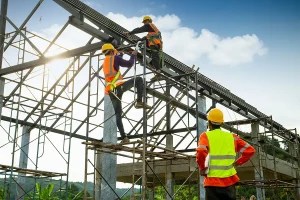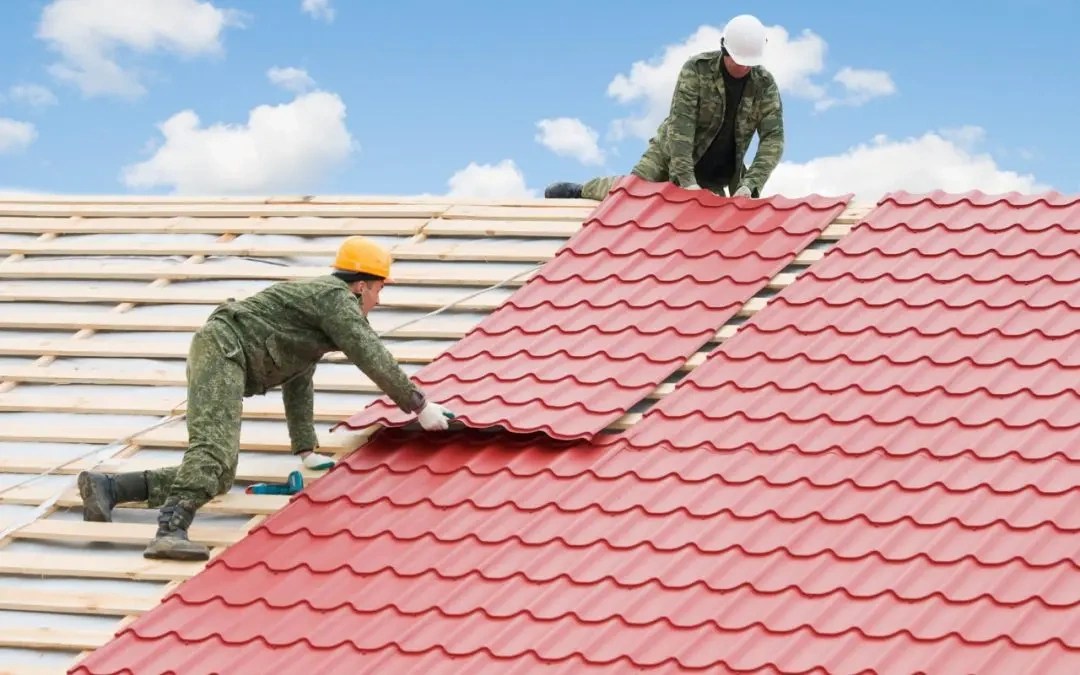In the realm of home art, achieving the perfect balance between building safety and crafting beauty is paramount. This article aims to provide valuable insights from experts in the field, guiding you on how to achieve this delicate equilibrium.
By understanding the core principles of construction safety, you can create visually appealing environments without compromising well-being. We will explore aspects such as identifying hazards, implementing robust safety measures, and seeking professional guidance when needed.
Additionally, we will emphasize the importance of selecting materials and techniques that not only enhance the aesthetic appeal of your home but also adhere to safety standards.
With the advice and strategies shared by experts, you can confidently embark on your creative journey while ensuring the safety and longevity of your living spaces.
Key Takeaways
- Construction safety is of utmost importance in any building project, as it protects workers and ensures the integrity of the structure.
- Hazards in the construction industry include falls from heights, struck-by hazards, and electrical hazards. Proper safety measures and personal protective equipment (PPE) should be implemented to mitigate these risks.
- Personal protective equipment (PPE) such as gloves, safety glasses, and respirators are essential for home art enthusiasts to protect against chemicals, sharp objects, and harmful substances.
- Best practices for maintaining a safe construction site include regular safety training, site inspections, proper equipment maintenance, and the enforcement of personal protective equipment (PPE) usage.
The Importance of Construction Safety
Ensuring construction safety is paramount in any building project. It not only protects the workers involved but also ensures the structural integrity of the building. Construction sites are inherently hazardous due to the presence of heavy machinery, heights, and potential exposure to hazardous materials. Therefore, implementing comprehensive safety measures is crucial to mitigate potential risks.
One of the key aspects of construction work safety is the adherence to safety regulations and standards. These guidelines provide a framework for safe practices and help in preventing accidents and injuries. It is important for construction professionals to stay updated with the latest regulations and ensure their implementation on-site.
Another vital aspect is the use of personal protective equipment (PPE). This includes safety helmets, gloves, goggles, and high-visibility clothing, among others. PPE acts as a barrier against potential hazards and helps in minimizing the risk of injuries.
Regular safety training and communication are also essential to ensure construction safety. Workers should be trained on safe work practices, emergency procedures, and the proper use of equipment. Open communication channels allow for the reporting of safety concerns and the implementation of corrective actions.
Common Hazards in the Construction Industry
Common Hazards in the Construction Industry arise due to various factors and pose significant risks to workers and the overall project. To ensure the safety of construction workers, it is crucial to identify and address these hazards.
Here are three common hazards in the construction industry:
- Falls: Falls from heights, such as from ladders, scaffolding, or rooftops, are a leading cause of injuries and fatalities in the construction industry. Proper fall protection measures, such as guardrails, safety nets, and personal fall arrest systems, should be implemented to prevent these accidents.
- Struck-by Hazards: Construction sites are filled with moving vehicles, heavy machinery, and falling objects, creating a high risk of workers being struck by these hazards. To mitigate this risk, workers should wear high-visibility clothing, use signaling devices, and establish designated walkways and traffic control measures.
- Electrical Hazards: Construction sites often involve the use of electricity, which poses a significant risk of electrical shocks, burns, and electrocution. Workers must be trained in electrical safety practices, such as identifying live wires, using insulated tools, and wearing appropriate personal protective equipment.
Essential Safety Equipment for Home Art Enthusiasts
To ensure the safety of home art enthusiasts, it is important to equip them with essential safety equipment.
These tools and gear are designed to protect individuals from potential hazards and accidents that can occur during art-related activities.
One of the most crucial pieces of safety equipment is personal protective equipment (PPE), which includes items such as gloves, safety glasses, and respirators. Gloves provide hand protection against chemicals, sharp objects, and heat, while safety glasses shield the eyes from flying debris and harmful substances. Respirators are essential for artists who work with materials that emit toxic fumes or dust particles.
Additionally, a first aid kit should always be readily available in case of minor injuries. Finally, fire extinguishers should be positioned strategically to quickly and effectively address any potential fire hazards.
Best Practices for Maintaining a Safe Construction Site
Implementing proper safety protocols is essential for maintaining a safe construction site. To ensure the well-being of workers and prevent accidents, here are three best practices that should be followed:
- Regular Safety Training: Conduct regular safety training sessions to educate workers about potential hazards, emergency procedures, and the proper use of safety equipment. This will help create a safety-conscious culture and ensure everyone is equipped with the necessary knowledge to work safely.
- Site Inspections: Regularly inspect the construction site to identify any potential safety hazards or violations. This includes checking scaffolding, electrical wiring, and machinery for any defects or malfunctions. Promptly address any issues to prevent accidents and maintain a safe working environment.
- Personal Protective Equipment (PPE): Require all workers to wear appropriate PPE, such as hard hats, safety goggles, gloves, and high-visibility vests. PPE should be regularly inspected and replaced when necessary to ensure it is in good condition and provides effective protection.
Expert Tips for Promoting Construction Safety
Promoting construction safety requires the implementation of expert tips and strategies. Construction sites can be hazardous environments, but by following these expert tips, you can create a safer workplace for all.
Firstly, conducting regular safety training sessions is essential. This ensures that all workers are aware of the potential risks and know how to prevent accidents.
Secondly, establishing clear communication channels is crucial. This allows for effective dissemination of safety information, such as hazard alerts and emergency procedures.
Thirdly, maintaining a clean and organized work area helps prevent trips, falls, and other accidents.
Additionally, providing personal protective equipment (PPE) and enforcing its use is vital to protect workers from potential hazards.
Lastly, regularly inspecting equipment and machinery ensures their proper functioning and reduces the risk of accidents.
Frequently Asked Questions
How Can Construction Safety Impact the Overall Quality and Aesthetic of a Home Art Project?
Construction safety plays a crucial role in ensuring the overall quality and aesthetic of a home art project. By adhering to safety protocols, potential hazards and accidents are minimized, allowing for a smooth and efficient construction process, resulting in a well-crafted and visually appealing finished product.
What Are Some Lesser-Known Hazards in the Construction Industry That Home Art Enthusiasts Should Be Aware Of?
Some lesser-known hazards in the construction industry that home art enthusiasts should be aware of include exposure to hazardous materials, such as lead and asbestos, as well as the risk of falls from ladders or scaffolding. Safety precautions should be taken to mitigate these risks.
Are There Any Specific Safety Equipment or Tools That Are Essential for Home Art Enthusiasts Working on Construction Projects?
Yes, there are specific safety equipment and tools that are essential for home art enthusiasts working on construction projects. These may include protective clothing, such as gloves and goggles, as well as tools like safety harnesses and ladders to ensure safe working conditions.
What Are Some Unique Best Practices That Home Art Enthusiasts Can Implement to Maintain a Safe Construction Site?
Home art enthusiasts can maintain a safe construction site by implementing best practices such as wearing appropriate personal protective equipment, practicing proper tool handling techniques, ensuring proper ventilation, and regularly inspecting equipment and materials for potential hazards.
Can You Provide Some Expert Tips on How to Effectively Promote Construction Safety Within a Home Art Project?
To effectively promote construction safety within a home art project, it is crucial to prioritize safety measures such as wearing appropriate protective gear, ensuring proper ventilation, and following established guidelines and regulations.
Conclusion
In conclusion, the intersection of construction safety and artistic endeavors within residential spaces is crucial for home art enthusiasts. By understanding and implementing the essential principles of safety, individuals can create aesthetically pleasing environments without compromising their well-being.
Identifying potential hazards, implementing robust safety measures, using essential safety equipment, and following best practices for maintaining a safe construction site are all key factors in ensuring the safety and longevity of living spaces. Seeking professional guidance and selecting materials and techniques that adhere to safety standards are also important considerations.
You May Also Like:





